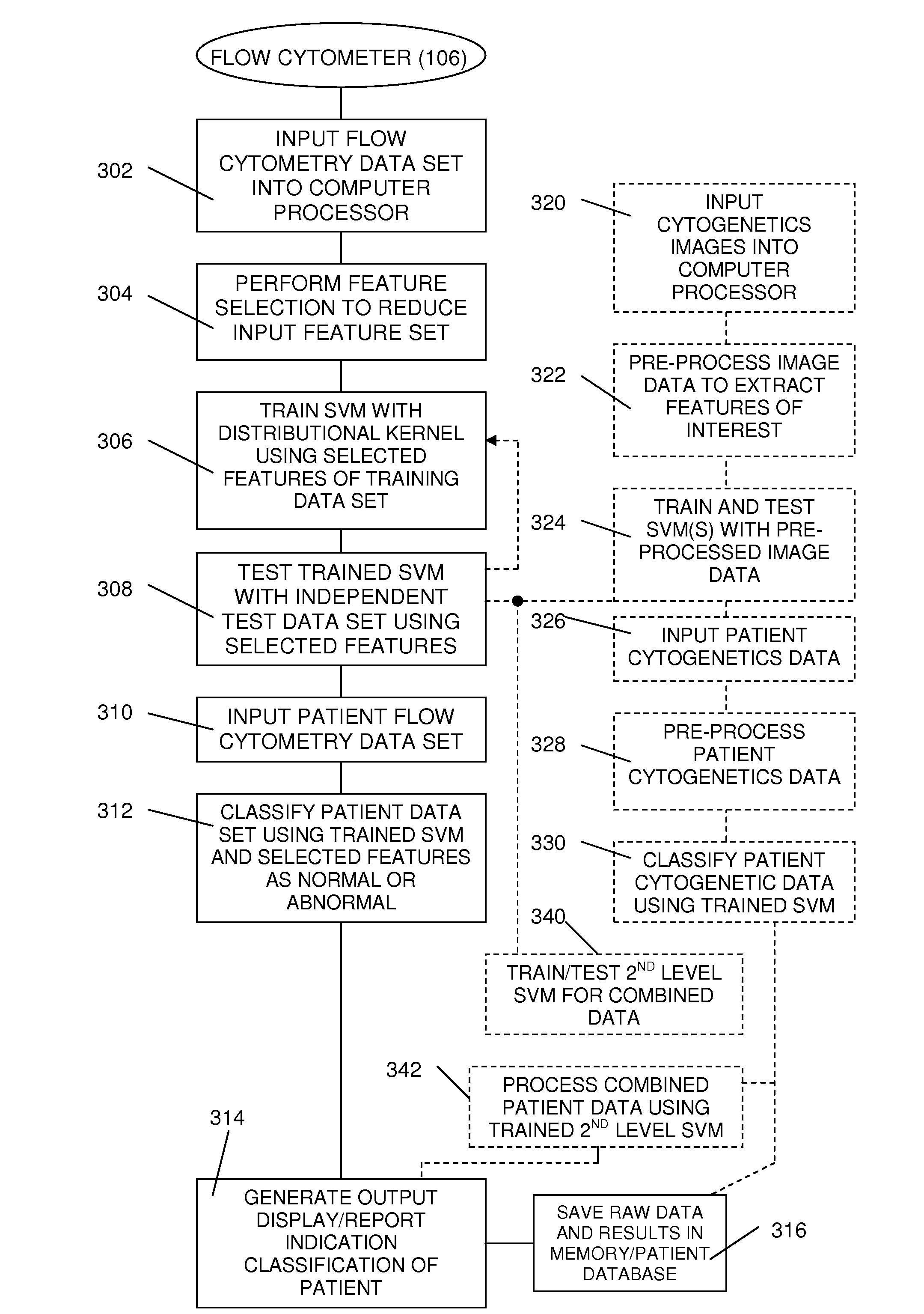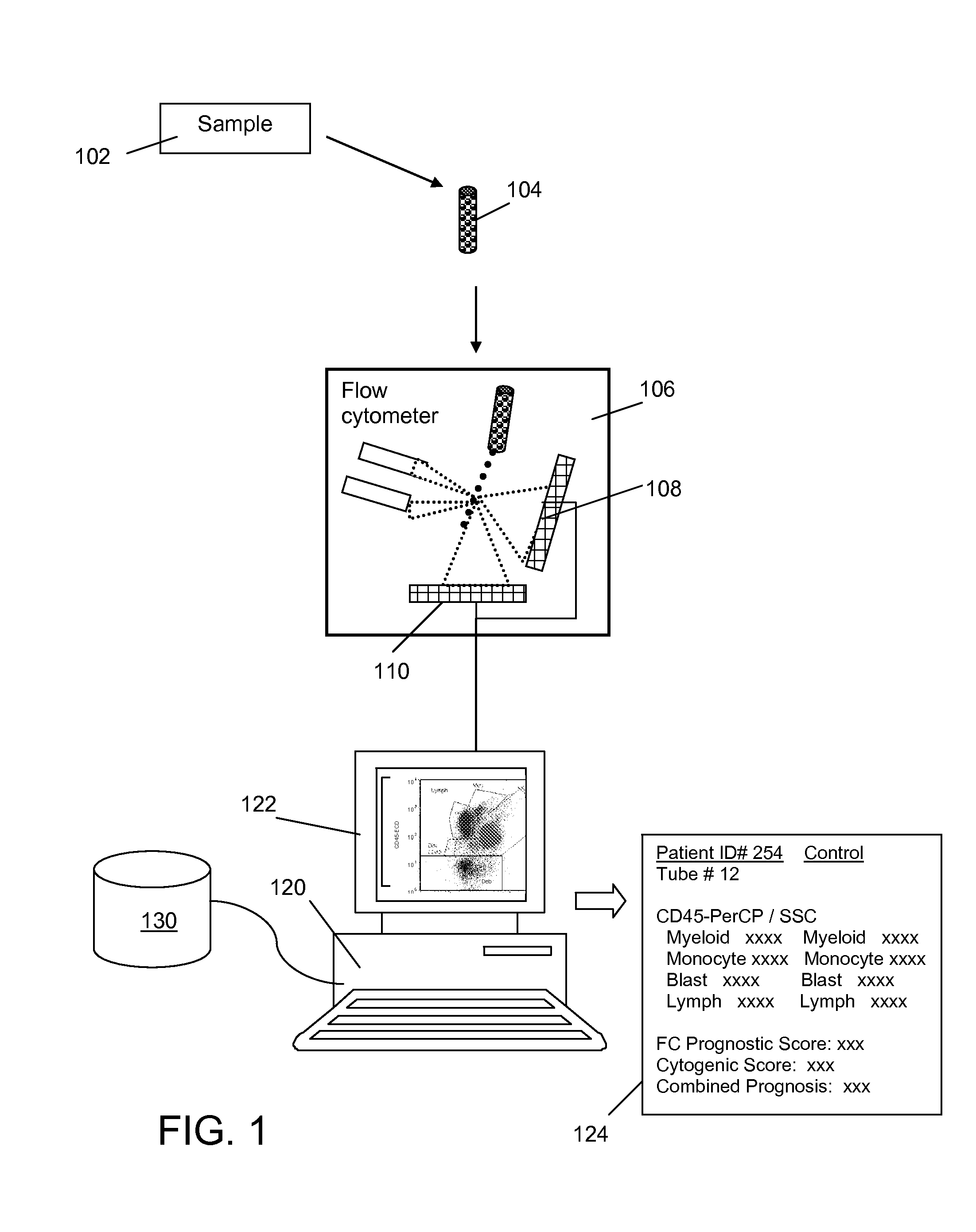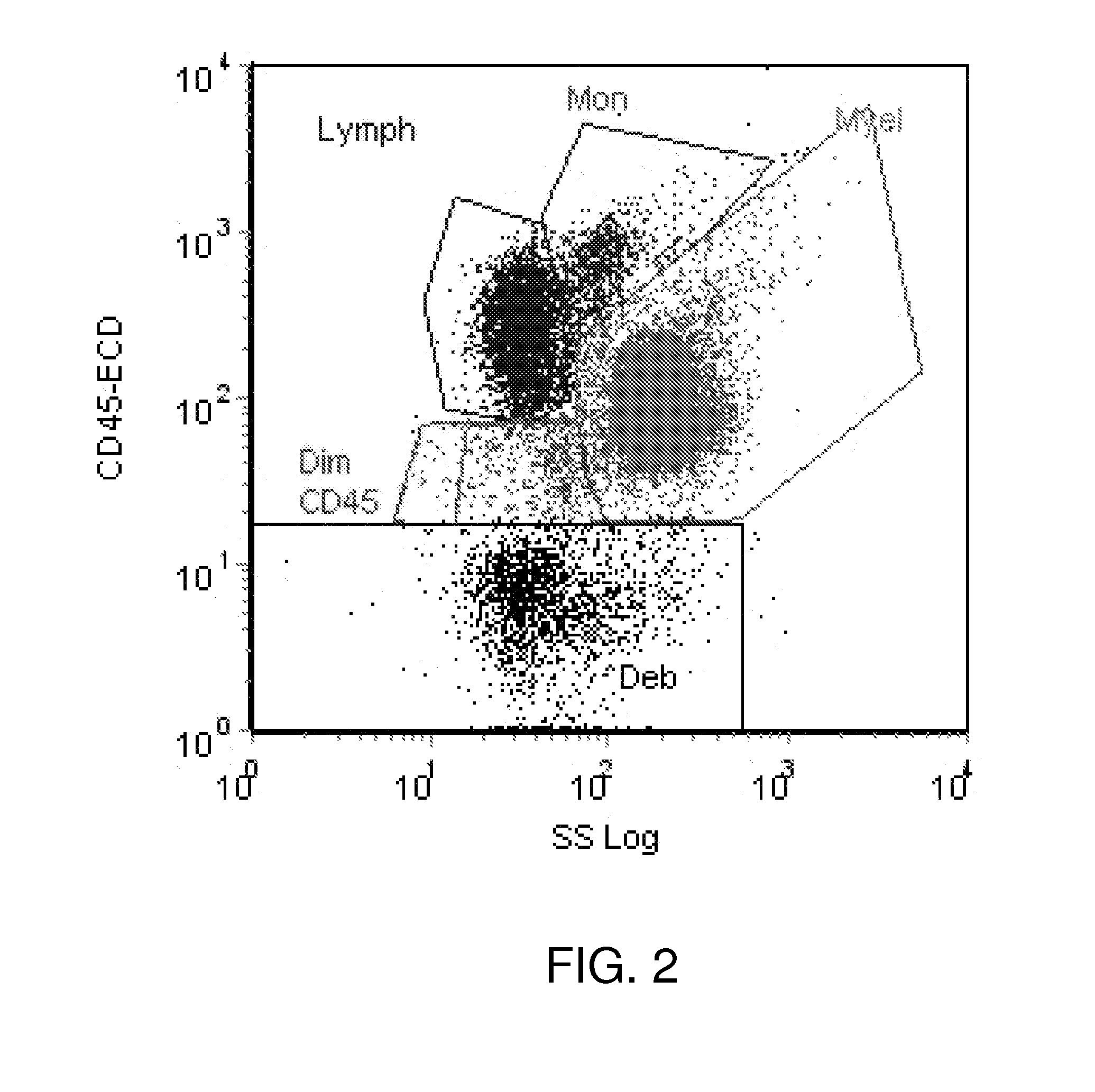Method and system for analysis of flow cytometry data using support vector machines
a flow cytometry and support vector machine technology, applied in the field of automated analysis of distributional data, can solve the problems of inability to fully utilize data through manual process, standard stops short of describing a protocol for computational post-processing and data analysis, and achieves accurate and highly sensitive methods for detection
- Summary
- Abstract
- Description
- Claims
- Application Information
AI Technical Summary
Benefits of technology
Problems solved by technology
Method used
Image
Examples
example 1
Detection of Myelodysplastic Syndrome (MDS)
[0028]The object of the present study is to investigate the potential connections between Myelodysplastic Syndrome (MDS)—related chromosome abnormalities in cytogenetics and the patterns in flow cytometry data. This immunophenotyping analysis is one of the most common applications of flow cytometry and the protocols for sample collection and preparation are well known to those in the art. Following the sequence illustrated in FIG. 1, bone marrow aspirates 102 from patients suspected of having MDS are collected in a saline or sodium heparin solution to create a cell suspension in a number of tubes 104 or other containers that are adapted to introduce the suspension into the flow cell of flow cytometer system 106. Reagents containing monoclonal antibodies conjugated with different fluorochromes are introduced into the tubes, with each tube receiving different combinations of antibodies with each different combination conjugated with one of se...
PUM
 Login to View More
Login to View More Abstract
Description
Claims
Application Information
 Login to View More
Login to View More - R&D
- Intellectual Property
- Life Sciences
- Materials
- Tech Scout
- Unparalleled Data Quality
- Higher Quality Content
- 60% Fewer Hallucinations
Browse by: Latest US Patents, China's latest patents, Technical Efficacy Thesaurus, Application Domain, Technology Topic, Popular Technical Reports.
© 2025 PatSnap. All rights reserved.Legal|Privacy policy|Modern Slavery Act Transparency Statement|Sitemap|About US| Contact US: help@patsnap.com



